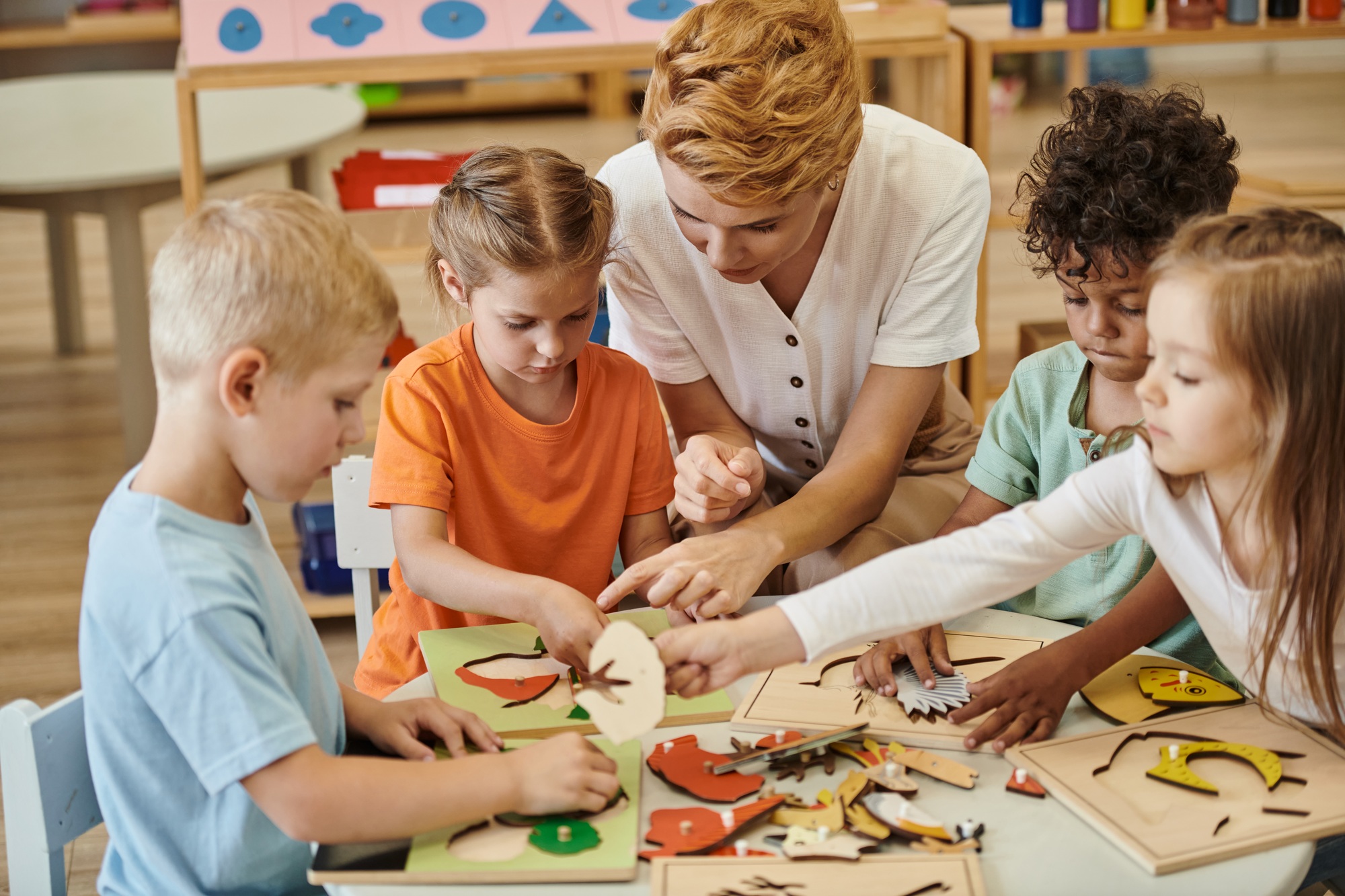At SILK GROUP, we offer various training delivery options to cater to the diverse needs and preferences of educators and school administrators. These options include in-person workshops, which provide hands- on, interactive learning experiences and the opportunity for participants to engage directly with experts and peers. Additionally, we offer live virtual training sessions, allowing for real-time instruction and collaboration without the need for travel, making it convenient for geographically dispersed teams. For more flexible learning, on-demand online courses are available, enabling participants to access high- quality content at their own pace. Blended learning models combine in-person and online components, offering a balanced approach that maximizes both interaction and convenience. Each of these delivery methods is designed to ensure that training is accessible, effective, and tailored to meet the specific needs of the educational institutions we serve.
This flexibility allows participants to choose the format that best suits their learning style, availability, and logistical needs, leading to more effective engagement and better outcomes. Additionally, offering multiple delivery methods enables us to reach a broader audience, ensuring that our services can have a wider impact on improving educational practices and outcomes. Here are samples of our training scopes and sequence for your consideration. We also build tailored training programs based on institutions’ identified needs.
1. Classroom and Behavioural Management
Learning to thrive in chaotic environments is difficult. As a result, teachers are challenged daily to create and maintain a positive and productive classroom environment that is conducive to learning. Each day can be quite challenging. In attempting to meet this challenge, teachers find themselves making common classroom behaviour management mistakes. This training is designed to introduce some of these common mistakes followed by suggestions for what we should do instead.
Training Objectives:
01
Describe what is meant by discipline.
02
Explain how assertive discipline is implemented.
03
Illustrate how to implement the reality therapy model.
04
Specify the love and logic approach.
05
Define the behavioural model and its characteristics.
06
Describe the misunderstandings of the behavioural model.
07
Specify the right to effective behavioural treatment and the right to effective education.
08
Describe the Ginott Model.
09
Characterize the Kounin Model.
10
Explain what character education is and describe two-character education programs.
11
Characterize the advantages and disadvantages of each model.
12
List concrete recommendations to help teachers reduce common problem behaviours.
Contenu d’accordéon
- 01. Reflect on one’s own classroom management style
- 02. Define challenges in managing a classroom effectively and investigate how to overcome them
- 03. Create a set of effective classroom rules
- 04. Describe what a well-managed classroom looks and feels like
- 05. Investigate effective strategies in managing a classroom
- 06. Create a positive classroom climate
- 01. Analyse causes of common behavioural difficulties in schools and plan how to overcome them
- 02. Investigate how intrinsic and extrinsic motivation can be used in planning to improve behaviour
- 03. Build new strategies for solving behavioural issues
- 04. Reflect on behaviour management techniques
- 01. Analyse effective strategies for seating arrangements, daily routines and managing materials, and generate ideas to apply these in the classroom
- 02. Investigate the use of display, students’ space and other aspects of the learning environment and be able to implement effective strategies in this area that help move learning forward
- 03. Create and monitor classroom management strategies
- 01. Implement proactive strategies in classrooms that promote good classroom management
- 02. Analyse the reasons why some learners are reluctant, then apply strategies that meet the needs of every student
- 03. Create and monitor classroom Encourage student’s self-management skills
- 01. Implement a variety of classroom management strategies to different situations
- 02. Design an effective classroom management plan
- 03. Reflect on current classroom management strategies and plan goals for additional implementation of strategies
2. Differentiated Instruction & Equal Opportunity Learning
Differentiated instruction introduces learning styles, multiple intelligences, and strategies to support learners in different learning styles and groups.
Training Objectives:
01
Identify learners’ needs and adapt lessons to different learning styles.
02
Understand and implement content, process or materials that help different learners learn.
03
Provide learners with equal opportunities to explore learning in their preferred style. environments.
04
What is “equal opportunity and diversity”?
05
Equal opportunity and diversity in the classroom
06
Equal opportunity and diversity in the teachers’ room
07
Tools for personal/professional development
3. Unlocking Dyslexia: Diagnosis & Management
Training Objectives:
Contenu d’accordéon
- 01. Understanding the basics of Dyslexia
- 02. Pinpointing what Dyslexia is not
- 03. Being alert to symptoms of Dyslexia at any age
- 04. Getting a diagnosis
- 01. Sprinting ahead with reading basics and practice
- 02. Playing with phonics
- 03. Putting memorizing, visualizing, and rhyming to good use
- 04. Taking advantage of multisensory methods
- 05. Handling everyday activities and difficulties
- 06. Teacher-student relationship
- 07. Developing the child’s emotional
- 08. Communication skills: maintaining integration and relationships with peers
- 09. Developing a structure for identifying
- 10. Strategy for handling errors
- 11. Homework technique for parents
- 01. Emotional reaction
- 02. Follow-on effects on the child’s learning style
- 03. Responses to tasks and self-esteem
- 04. Intervention strategies
- 05. Teacher-student relationship
- 06. Developing the child’s emotional
- 07. Communication skills: maintaining integration and relationships with peers/li>
- 08. Developing a structure for identifying
- 09. Strategy for handling errors
- 10. Homework technique for parents
- 01. Exploring your options for schools and programs
- 02. Investigating the Individualized Education Program
- 03. Taking part in your child’s treatment
- 04. Assisting Dyslexic teens
- 05. Heading off to college
- 01. Teaching and Learning Considerations, including marking and Individual Education Plans (IEP) targets
- 02. Children’s views on what makes a primary school dyslexia-friendly
- 03. Assessment considerations within the classroom
- 04. Some suggestions about dyslexia-friendly resources for a limited budget
- 05. Practical suggestions and tools relating to classroom practice

4. Active Learning: Constructivist Theory
This course is designed to help classroom teachers to become constructivist educators. This is a process that aims at involving learners in the doing of the learning process instead of being passive receivers. Active learning is also called brain-based instruction. Teachers will learn how the brain learns to help learners best obtain, process, retain, and apply the knowledge, skills, and attitude they learn via a variety of activities including problem solving, teamwork, pair-work, critical thinking. Active learning also requires appropriate “constructivism”, which refers to creating efficient learning environments through the implementation of adequate strategies.
Contenu d’accordéon
- 01. Aligned with constructivist strategies and evolved from traditional philosophies.
- 02. Promoting research-based learning through investigation and authentic scholarly content.
- 03. Encouraging leadership skills of the students through self-development activities.
- 04. Creating a suitable atmosphere for collaborative learning to build knowledgeable learning communities.
- 05. Cultivating a dynamic environment through interdisciplinary learning and generating high-profile activities for an optimal learning experience.
- 06. Integrating accumulated knowledge to incur a rich structure of knowledge among the students.
- 07. Implementing a task-based performance enhancement by giving the students a realistic practical sense of the subject matter learnt in the classroom.
- 01. Purposive: the relevance of the task to the students’ concerns.
- 02. Reflective: students’ reflection on the meaning of what is learned.
- 03. Negotiated: negotiation of goals and methods of learning between students and teachers.
- 04. Critical: students appreciate different ways and means of learning the content.
- 05. Complex: students compare learning tasks with complexities existing in real life and making reflective analysis.
- 06. Situation-driven: the need of the situation is considered to establish learning tasks.
- 07. Engaged: real life tasks are reflected in the activities conducted for learning.
- 01. Cognitive Brain and Brain-Based Instruction
- 02. Teaching Methodologies, Strategies, and Techniques
- 03. Formative Assessment for Reflective Teaching

5. Emotional Intelligences in Learning Environments
Targeted Audience: school leaders, teachers, students, and parents
This training focuses on developing emotional intelligence (EQ) in both teachers and students. Educators will learn to recognize and manage their emotions while fostering a supportive environment that helps students cope with challenges and succeed academically and emotionally.
Contenu d’accordéon
- 01. Creating a “relationship-centred” (student-centred) approach to education.
- 02. Providing a learning environment for student’s motivation in achieving the highest learning outcomes.
- 03. Helping students to cope better with transitions.
- 04. Tackling lower dropout rates from secondary school and university.
- 05. Guiding students for better career orientation along their journey to higher educational pursuals, as well as to achieve more emotional resilient and sustain healthier and happier mental state (e.g., by living with a purpose and connecting with the loved ones).
- 01. Paying attention to self and others’ body language, physical presentation, and mental health issues.
- 02. Understanding how the emotional brain works and apply it in engaging learning.
- 03. Understanding how the cognitive brain learns and apply it in retaining learning outcomes.
- 04. Listening more to personal feelings and manage well personal emotions, speak less and develops empathy, using multisensory teaching methods.
- 05. Getting curious, not furious – Learn to respond not to react: Fulfilling tasks during stress.
- 06. Reframing negative emotions and replaced with compassion and mindfulness.
- 07. Influencing students to take pride in their work and enhance morals and values.
- 08. Self-Awareness and Empathy.
- 09. Decision Making and Problem Solving.
- 10. Getting along with others.
- 11. Gentleness – perseverance, self-motivation and self-control.
- 01. Cognitive Brain and Brain-Based Instruction
- 02. Teaching Methodologies, Strategies, and Techniques
- 03. Formative Assessment for Reflective Teaching
- 01. Activities-based and constructivism approach
- 02. Discussion – formative assessment activities
- 03. 3D conceptional building practice

6. Project-Based Learning: The Finnish Model
Course Length: 10 hours (2 full sessions)
Targeted Audience: school leaders, teachers, students, and parents
Session 1: Student-Centred Pedagogy – Strategic Teaching of Communication and Collaboration Skills
Human beings are communicators and collaborators by nature; however, within school context, these skills need a lot of rigorous teaching, modelling and practice to reach the full potential of collaborative learning. The content of this course is based on empirical research and innovative teaching practices conducted by the trainer over 20 years of teaching. It is designed to deepen the understanding of why collaborative learning must be part of every classroom. Moreover, it is designed give the participants plenty of tools and strategies to be implemented in their classrooms regardless of the age of their students. In the past this course has been transformative for many participants in their journey of building truly student-centred classrooms.
Contenu d’accordéon
- 01. Based on empirical research and innovative teaching practices conducted by the trainer over 20 years of teaching
- 02. Promotes skill-based approach to teaching and learning.
- 03. Models effective way of combining skill and content objectives for teaching and learning.
- 04. Promotes collaborative learning and builds genuine student-centred classrooms.
- 05. Promotes building student-student, student-teacher relationships.
- 06. Based on empirical research and innovative teaching practices.
- 01. Justification for rigorous teaching of communication and collaboration skills: Overview and conclusions of the empirical research conducted by the trainer.
- 02. Teaching Methodologies, Strategies, and Techniques: The Finnish Model and best practices.
- 03. Planning implementation and sharing takeaways.
Session 2: Project-Based Learning – Strategies for Building Meaningful Learning Experiences for Students
There is not one right way of conducting Project-Based Learning with students. Student involvement in planning the contents, learning process and assessment may vary depending on the primary learning objectives of the project. The content of this course is based on the practical research and innovative teaching practices conducted by the trainer over 20 years of teaching. The trainer will share case examples of projects he has run with his students.
Through these examples and modelling of different strategies the participants will walk away with plenty of concrete tools and strategies for designing meaningful learning experiences for their students even in collaboration with their students.
Contenu d’accordéon
- 01. Encourages innovation in teaching practices.
- 02. Models how to implement Investigative Learning Process in PBL.
- 03. Tackles the idea of Process Orientation over Product Orientation.
- 04. Promotes skill-based approach to teaching and learning.
- 05. Models effective way of combining skill and content objectives for teaching and learning.
- 06. Promotes collaborative learning and building truly student-centred classroom.
- 07. Encourages innovation in teaching practices.
- 08. Models how to implement Design Thinking in PBL.
- 01. Case examples of well-designed and effective PBL: Overview and conclusions of the empirical research conducted by the trainer.
- 02. Teaching Methodologies, Strategies and Techniques: The Finnish Model and best practices.
- 03. Planning implementation and sharing takeaways.

Why choose SILK GROUP ?
At SILK GROUP, we believe that education is not a fixed field of study that can be tied to a specific training model. We work hand in hand with several renowned institutions to provide top-notch training programs that are up-to-date and address educational challenges. The training workshops below are a non-exhaustive list of what we offer to educational institutions worldwide and in several languages (English, French, Italian, Finnish, and Arabic). All of our training programs are EU certified.
Leadership Skills in Schools
Empowering Educators
Differentiated Instruction & Equal Opportunity Learning
Building Child Protection Mechanisms
Investing in Multicultural Skills
Promoting Equity in Education
Preventing Bullying in Schools: Teacher Guide
Special Education and Equity
Qualitative Assessment & Data Analysis
Unpacking Teacher Performance Appraisals
Equal Opportunity Learning: Myth VS. Truth
Phenomena-based Learning: Engaging Minds, Inspiring Inquiry
Building Data-Driven Professional Development Structures
Planning Accreditation & Recommendations Follow-up
Fostering Engagement through Play
Project-Based Learning: The Finnish Model
Professional Development & Overlapping Learning Communities
Mastering Quality Control via Data Analysis
Cross-Curricular Educational Planning
Active Learning: Constructivist Theory
Classroom & Behavioural Management
Teacher Performance Evaluation Tools
Building Strong Relationships with Students and Families
Checks for Understanding: Using Formative Assessments in the Classroom
Data-Driven Action Planning
Planning with Key Performance Indicators
Harnessing Microlearning for Modern Teaching
Foundation Program: Essential Skills for New Teachers
Building Strong Relationships with Students and Families
Unpacking Accreditation Standards & Building Improvement Plans


